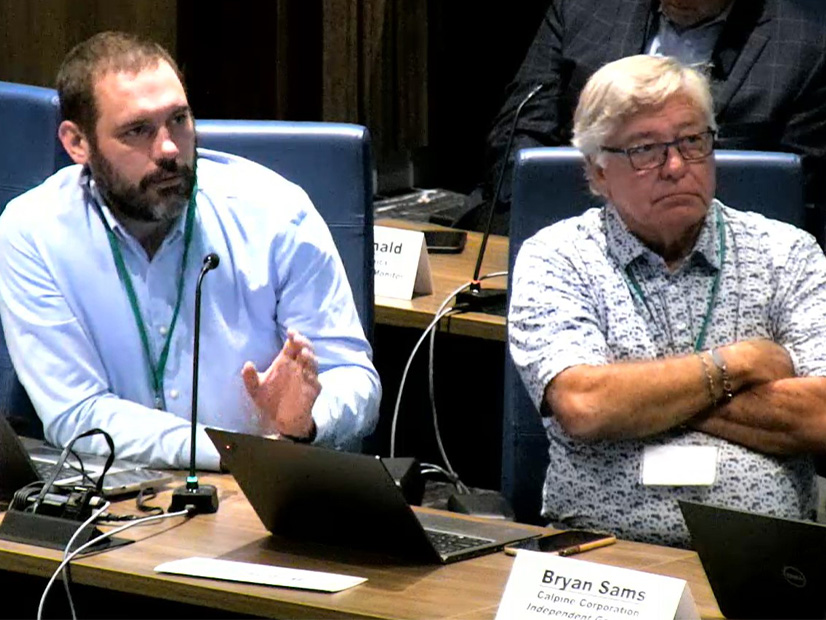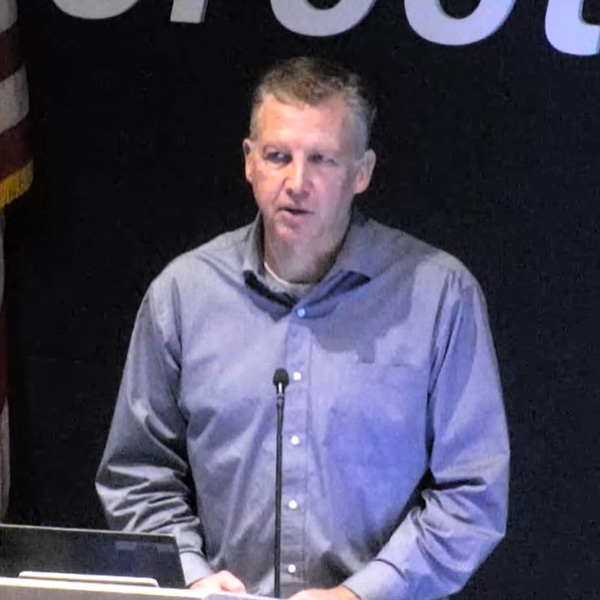ERCOT has told stakeholders it may move up the real-time co-optimization project’s go-live date from its previous September 2026 target, welcome news about a mechanism that will be integral to the future market design.
“We’re not going live in September 2026. It’s well ahead of that,” ERCOT’s Matt Mereness, chair of the Real-time Co-optimization + Battery Task Force (RTC+B), told the Technical Advisory Committee during its Aug. 28 meeting. “There is a possibility for getting this in by the end of 2025. By next month at this time, we should have a better feel for what that date is.”
Mereness said several sequenced issues need to be resolved before going live. They include parameters for ancillary service (AS) demand curves, readying the real-time co-optimization (RTC) simulator and market readiness.
“We’re on the eve of having the project schedule. Some of the details are still working out,” he said.
Cautioned by stakeholders that RTC’s go-live date could have a large effect on forward prices, Mereness agreed.
“I think part of it is, will the program have a date? And then there’s the risk management around it … what are the dates that have the confidence in it?” he said. “So yes, that’s part of the vetting process.”
RTC is used by most other grid operators in North America and has been on ERCOT’s market design and policy radar for more than 10 years. The market tool procures energy and ancillary services every five minutes, automating many processes that currently are managed manually.
A previous task force, also chaired by Mereness, secured approval for seven nodal protocol revision requests (NPRRs) and two other changes that will guide the tool’s implementation. The task force was disbanded in 2020, but the disastrous 2021 winter storm put further work on hold until 2023. (See “RTC Stakeholder Group to Form,” ERCOT Technical Advisory Committee Briefs: July 25, 2023.)
ERCOT’s Independent Market Monitor released a report in 2018 that evaluated RTC’s effect on the market. Using 2017 as its simulated operating year, it found a $1.6 billion reduction in total energy costs; an $11.6 million reduction in production costs to serve load; a $257 million reduction in congestion costs; a $155 million reduction in AS costs; and reliability improvements due to a reduced overloading of transmission constraints and a decrease in regulation up.
TAC Tables Remanded NPRR
Members agreed to table a nodal protocol revision request (NPRR1215) after it was remanded back to TAC by ERCOT’s Board of Directors to correct an error that led to its withdrawal. (See “Error Forces NPRR’s Withdrawal,” ERCOT Technical Advisory Committee Briefs: July 31, 2024.)
Staff said they pulled back the NPRR after they found an error in its formula calculation. They said they have since discovered potential issues that need further investigation and requested it be tabled.
The rule change clarifies that the day-ahead market energy-only offer credit exposure calculation zeros out negative values.
TAC also will have to take the bifurcated part of a Nodal Operating Guide’s rule change (NOGRR245) that was partly approved by ERCOT’s Board of Directors Aug. 20. While approving voltage ride-through requirements for inverter-based resources (IBRs), the directors ordered that a board priority NOGRR be drafted to clarify hardware modification requirements and exemption standards and processes. (See ERCOT Board of Directors Briefs: Aug. 19-20, 2024.)
The subsequent rule change will address more details around NOGRR245’s exemption process, including the ability to supplement information if a resource entity makes an exemption request by April 1, 2025; appropriate criteria for some level of hardware upgrades for a “vintage” resource to meet relevant ride-through performance requirements or whether it be granted an exemption; and details about the reliability assessment process.
TAC Chair Caitlin Smith, with Jupiter Power, said ERCOT staff is waiting until the Public Utility Commission approves NOGRR245, likely during its Sept. 26 open meeting, before beginning work on the bifurcated portion. Staff hope to bring a final version of the subsequent NOGRR to the board’s February meeting to meet the April 1 deadline for exemption requests.
“Having something that’s done and approved and implemented by April, that’s a big lift,” Luminant’s Ned Bonskowski said. “I’m not saying we can’t do it. I just want us to be honest with ourselves about what’s possible.”
Smith voiced similar concerns to the board during its August meeting.
Ancillary Services Workshop
Following the morning TAC meeting, members gathered again in the afternoon for a workshop on the PUC’s ancillary services study. The commission will use the study in reviewing the type, volume and costs of the grid operator’s four AS products and evaluate whether additional services are needed (55845).
The PUC asked both ERCOT staff and the IMM to collaborate on the study. They reviewed AS products for reliability needs and improvements in their procurement to improve efficiency and lower costs.
Staff aren’t recommending additional AS products for the time being. However, it has proposed exploring two potential improvements: developing a probabilistic method to calculate the appropriate quantities of non-frequency responsive non-spin and ERCOT contingency reserve service (ECRS); and determining the final AS quantities closer to the operating day, rather than annually.
The IMM used a model with a random probability distribution to perform its analysis. It found ECRS and non-spin quantities can be “substantially” reduced while maintaining reliability. The monitor said a 1-in-10 reliability standard still can be satisfied with 50 and 35% reduced procurements for ECRS and non-spin, respectively.
A draft study will be filed at the PUC by October, opening a comment period for stakeholders. The PUC will host a workshop on the study Oct. 31.
Lightening the Mood
American Electric Power’s Richard Ross, who also sits on SPP’s Markets and Operations Policy Committee and does his best to boost the levity in both committees, offered Smith a method to lighten the mood among members.
“I understand someone said earlier we don’t have fun in these meetings anymore. One of the things some of us do is force the group in unison to read the [antitrust] attestation at their own pace,” he cracked. “It does give us a smile opportunity, should you feel the need to amp up the culture of the meeting.”
Smith responded that she was open to Ross’ suggestion.
“I was just told that at TAC, unlike SPP, we don’t have ‘cookies and laughter,’ so we will work on that,” she said. “Someone else said we do have snickering, so with that, let’s get started.”
Consent Agenda OK’d
TAC endorsed a combo ballot that included three NPRRs, one NOGRR and a single change to the Retail Market Guide that, if approved by the ERCOT board, will:
-
- NPRR1227, RMGRR181: Align defined protocol terms and add five definitions (“acquisition transfer,” “decision,” “effective date,” “gaining competitive retailer” and “losing competitive retailer”) that previously were located in the Retail Market Guide (Acquisition and Transfer of Customers from one Retail Electric Provider to Another). The NPRR also replaces the broadly titled terms “decision” and “effective date” with the specific terms “mass transition decision,” “acquisition transfer decision,” “mass transition effective date” and “acquisition transfer effective date” to provide clarity. The change also expands the “gaining competitive retailer” and “losing competitive retailer” definitions to apply beyond the mass transition and acquisition transfer processes.
-
- NPRR1236: Reflects Real-Time Co-optimization Plus Batteries (RTC+B) Task Force’s modifications to the reliability unit commitment capacity-short calculations and addresses limits in the current calculations by considering ancillary service sub-types. It changes the calculation process involving regulation down service and addresses changes required to align protocol language with recently approved NPRR1204 (Considerations of State of Charge with Real-Time Co-Optimization Implementation).





